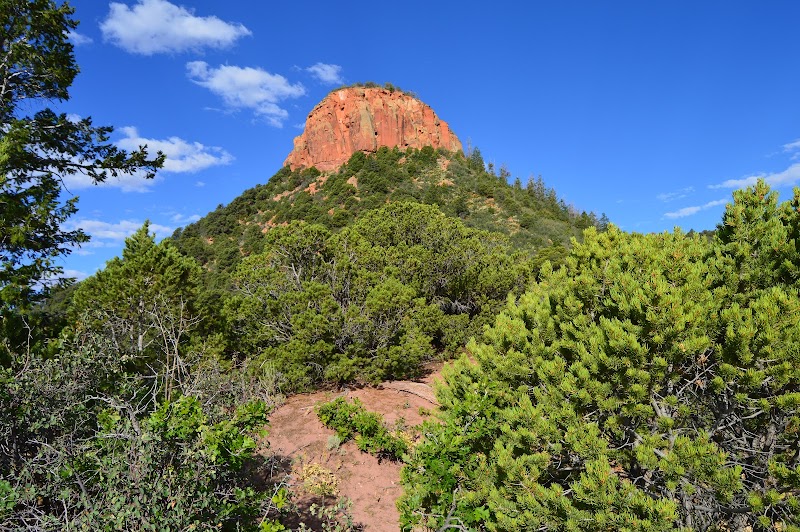
Discover the ancient artistry of Southeastern Utah at the Utah Rock Art Research Association Symposium in Blanding. Engage with the region's stunning petroglyphs and pictographs while enjoying guided hikes and expert presentations designed for both casual visitors and seasoned adventurers.
Choose Footwear for Varied Terrain
Select sturdy hiking boots that provide ankle support for rocky, uneven surfaces common around rock art sites to prevent slips and protect your feet.
Pack Ample Water
Carry at least two liters of water per person; the dry, high-desert climate of Blanding draws moisture from your body quickly even in cooler weather.
Plan Your Hike Timing Wisely
Early morning or late afternoon provide the best light for viewing and photographing delicate rock art panels, while also avoiding midday heat hazards.
Respect Preservation Guidelines
Do not touch or lean on rock art surfaces; oils from hands and contact can damage these irreplaceable cultural treasures irreparably.
Exploring Ancient Echoes: Utah Rock Art Research Association Symposium in Blanding
Each fall, the quiet town of Blanding, Utah, transforms into a hub for rock art enthusiasts, archaeologists, and adventurers at the Utah Rock Art Research Association Symposium. This annual gathering draws participants into the heart of Southeastern Utah's rugged landscape, offering a rare chance to connect directly with ancient petroglyphs and pictographs that narrate stories tens of thousands of years old.
Blanding sits at a crossroads of vast canyons and mesas, where the rock walls dare you to decipher their chalky carvings. The terrain varies from sandy washes to steep inclines, inviting both casual hikers and serious explorers to tread carefully — the journey here is as important as the destination. Trails leading to rock art sites range from easy 1-3 mile walks to more demanding 5-7 mile routes with elevation gains up to 1,000 feet, testing your stamina without overwhelming.
The symposium is more than a static exhibit; it’s immersive. Guided field trips introduce you to petroglyph panels framed by juniper and pinyon pines, winds that push forward like restless guides stirring the stories into life. Specialists and local experts share practical insights on preservation, interpretation, and techniques for documenting rock art, empowering attendees to appreciate these relics not just as visitors, but stewards.
Timing your visit can shape your experience. Early fall temperatures hover around a comfortable 60-75°F, with crisp air making every breath feel deliberate. Morning hikes bring soft light that reveals grooves etched by ancient hands, while afternoon shadows add contrast for photography. Hydration is key; the dryness steals moisture quicker than you expect. Well-broken hiking boots and layers for temperature shifts are essential.
Beyond the symposium, Blanding offers abundant opportunities to extend your adventure. Nearby, Butler Wash and the Valley of the Gods provide additional sites where rock art peers through weathered sandstone cliffs. Each site invites a dialogue with a land fiercely itself — alive with wind, sun, and ancient presence.
Whether you’re a seasoned archaeologist or a weekend adventurer curious about past civilizations, the Utah Rock Art Research Association Symposium in Blanding provides a practical and engaging doorway into a world where nature and history challenge you to listen closely and tread lightly. Prepare thoroughly, bring respect, and you’ll return with more than photos — you’ll carry stories etched in stone.
Nearby Trips
All Adventures
Boat Charters
Water Activities
Adventures near Blanding, Utah
Discover the unique and memorable adventures that make Blanding, Utah special.
Frequently Asked Questions
What kind of rock art can I expect to see at the symposium?
The symposium focuses on petroglyphs and pictographs made by ancient Puebloan and Ancestral peoples, showcasing abstract symbols, animals, and human figures carved or painted onto sandstone surfaces.
Are there guided hikes included during the event?
Yes. The symposium offers expert-led field trips to accessible rock art sites, combining practical hikes with educational commentary from archaeologists and local experts.
Is the terrain suitable for beginners?
Trail difficulty ranges, with most hikes rated moderate. While some routes are easy and family-friendly, others require steady footing over uneven rock and incline; adequate preparation is advised.
What are the best months to attend the symposium?
The symposium usually takes place in early fall (September to early October), when temperatures are comfortable and weather is stable, ideal for hiking and outdoor presentations.
How should visitors approach rock art conservation?
Visitors must avoid touching or defacing rock walls, stay on designated paths, and refrain from using flash photography – all to protect the fragile patina and pigments preserved over millennia.
Can I visit rock art sites independently outside the symposium dates?
Yes, but visitors should research access rules, as some sites may be on private or protected lands requiring permits or guides for visitation.
Recommended Gear
Sturdy Hiking Boots
Provides ankle stability and traction necessary for navigating rocky, uneven terrain near rock art sites.
Hydration Pack or Water Bottles
Critical to maintaining hydration in the dry desert environment, especially during summer heat.
Sun Protection (Hat, Sunglasses, Sunscreen)
Shields skin and eyes from intense desert sun during exposed hikes.
Light Layered Clothing
Enables quick adjustments to temperature swings common in fall – cool mornings warming into moderate afternoons.
Local Insights
Hidden Gems
- "Butler Wash panels featuring rarely seen horseshoe designs"
- "Cliff alcoves where rock art is shielded from wind and sun"
Wildlife
- "Golden eagles circling high cliffs"
- "Desert bighorn sheep navigating rocky ledges"
- "Chukars and other upland game birds"
History
"Blanding lies near Bear Ears National Monument, an area rich in ancestral Puebloan heritage, where rock art serves as a direct imprint of early human expression and interaction with this fierce landscape."
